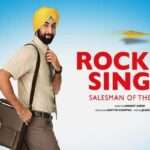Case Breakdown: Movie Avtaar
The scene that you just saw, shows the owner of Laxmi Narayan & Co. who is curious to know why suddenly the sales of the company have dipped. His son-in-law informs him that Avtaar Enterprise (Owned by Rajesh Khanna in the movie) is selling the products i.e. ball bearings, piston rings, etc. at lower costs. Hence, sales of Laxmi Narayan & Co. have taken a hit.
Bearings (as mentioned in the scene) are mechanical devices employed to reduce friction between rotating equipment. In a traditional hatchback, an average of about 60 bearings are fitted and the number goes up in the case of sedans and SUVs. This blog, Learning Perspectives will explore the meaning of competitive advantage.
What is Competitive Advantage?
Competitive advantage is derived from the two approaches of lower costs and differentiation. Among two similar products, a rational consumer would choose a cheaper product. This allows the company (Avtaar enterprise in this case) to earn higher margins. In this case, Avtaar Enterprise uses the concept of cost leadership to achieve a competitive advantage.
Competitive advantage is derived from the two approaches of lower cost and differentiation. Porter suggested business strategies based on:
a) Cost Leadership
b) Differentiation
c) Focus
Cost leadership occurs when the company can produce its products at a lower cost. Hence, it can also sell its products at a lower cost compared to its competition. This situation takes place due to many reasons, such as an efficient supply chain network, lower labor costs, branding, customer service, etc.

In 2000, Tata Steel emerged as the lowest-cost producer of steel. Cost reduction was achieved through benchmarking with the global steel firms.
Differentiation occurs when the company creates value that is unmatched and customers are willing to pay more for the differentiated features and services. In 1985, Frooti, a Parle agro product launched the drink in a tetra pack. Glass-bottled drinks were perceived as synthetic. Apple products are too highly differentiated and consumers are willing to pay high prices for the product.
Focus relies on either cost leadership and differentiation but caters to a narrow segment of the total market. Focus strategies are niche strategies. Harvest Gold Foods, differentiates its brand name on the basis of the location focus.
Competitive advantage can be further divided into 2 parts namely comparative advantage and differential advantage.
Comparative Advantage:
A company’s capacity to produce the product (ball bearings) more efficiently compared to the other company. Comparative advantage does not necessarily mean a better product, but it does mean producing the same value at a lower cost. For example, India’s workforce is educated, English-speaking, and comes at a lower cost, hence many companies from abroad outsource their work to India rather than Bangladesh or Nepal, or Pakistan. This is India’s comparative advantage.
If we consider the bearing industry in India, the Indian bearings market constitutes less than 5 percent of global bearings demand. In terms of consumption, about 60 percent of the requirement is catered through domestic production while the remaining is met through imports. Indian bearing size is estimated at Rs 95 billion.
Differential Advantage:
This occurs when the competitor’s products are considered to differ from competitors’ products and are much more respected. Product is assumed to have better quality and superior design or hassle-free services. For e.g. Apple Inc. differs in its innovative products, it is considered to be innovative and hence is highly priced. The consumer wants to buy Apple iPhones, Ipods, and watches, not because they are cheaper but because they are different.
Similarly, If we consider the bearing industry, Cars and SUVs have a strong demand for bearing for better durability, stiffness and at the same time being lightweight. These demands can only be met by products that are using lightweight materials.
Understand Competitive Advantage with a Video
References:








